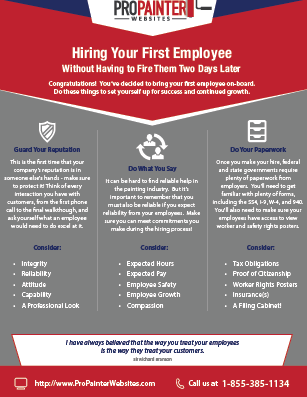Discover The Influence Of Seasonal Elements On The Performance Of Business Outside Painting And Recognize The Optimal Times To Achieve Long-Lasting Outcomes For Your Task
Discover The Influence Of Seasonal Elements On The Performance Of Business Outside Painting And Recognize The Optimal Times To Achieve Long-Lasting Outcomes For Your Task
Blog Article
Created By-Aguilar Rodriquez
When you're intending a business exterior painting job, seasonal factors can make or damage your outcomes. You'll want to consider just how temperature and humidity impact paint application and drying times. Choosing the ideal period can ensure your paint adheres appropriately and lasts longer. However which seasons are genuinely the very best for this type of work? Allow's check out the key elements that can impact your job's success.
The Effect of Temperature on Paint Application
When you're intending an industrial exterior painting task, the temperature can dramatically influence exactly how well the paint adheres and dries.
Ideally, you wish to paint when temperatures vary in between 50 ° F and 85 ° F. If it's too cool, the paint might not cure correctly, causing concerns like peeling or fracturing.
On the other side, if it's also warm, the paint can dry too promptly, preventing proper attachment and resulting in an unequal surface.
You should also think about the moment of day; morning or late afternoon uses cooler temperatures, which can be more beneficial.
Always inspect surprise painting company for the particular paint you're utilizing, as they usually supply guidance on the suitable temperature range for optimum outcomes.
Moisture and Its Impact on Drying Times
Temperature level isn't the only environmental variable that influences your business outside painting project; moisture plays a considerable duty too. High humidity levels can decrease drying times significantly, affecting the total quality of your paint task.
When the air is filled with dampness, the paint takes longer to cure, which can result in issues like poor attachment and a greater danger of mold growth. If you're repainting on a particularly humid day, be prepared for prolonged wait times in between layers.
It's critical to check neighborhood weather conditions and plan accordingly. Ideally, go for humidity levels in between 40% and 70% for ideal drying.
Keeping these consider mind ensures your project stays on track and provides an enduring coating.
Best Seasons for Commercial Exterior Painting Projects
What's the most effective season for your business external painting tasks?
professional painters and early loss are generally your best bets. During these periods, temperature levels are moderate, and moisture levels are usually lower, producing perfect conditions for paint application and drying.
Stay clear of summer season's intense heat, which can cause paint to completely dry too quickly, resulting in poor adhesion and surface. Similarly, wintertime's cool temperatures can prevent proper drying out and treating, running the risk of the durability of your paint job.
Aim for days with temperature levels in between 50 ° F and 85 ° F for optimal results. Keep in mind to examine the neighborhood weather prediction for rainfall, as damp conditions can wreck your job.
Preparation around these elements guarantees your painting job runs efficiently and lasts longer.
Verdict
In conclusion, planning your industrial external painting jobs around seasonal considerations can make a significant difference in the result. By organizing job throughout the excellent temperatures and humidity degrees, you'll ensure better adhesion and drying out times. Remember to keep an eye on local weather forecasts and choose the correct time of year-- spring and early loss are your best options. Taking these steps will help you attain a sturdy and specialist finish that lasts.
